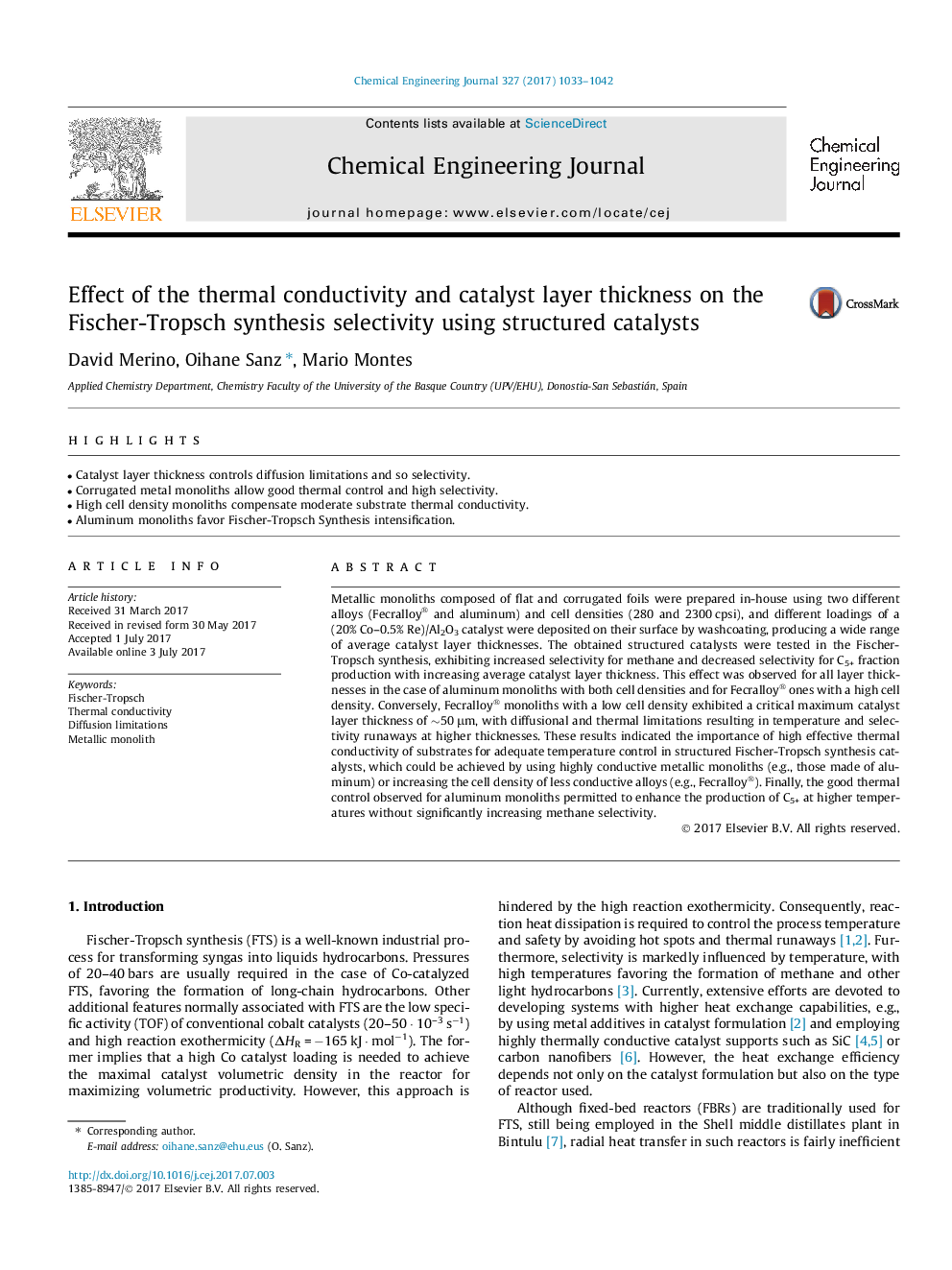| کد مقاله | کد نشریه | سال انتشار | مقاله انگلیسی | نسخه تمام متن |
|---|---|---|---|---|
| 6465168 | 1422951 | 2017 | 10 صفحه PDF | دانلود رایگان |
- Catalyst layer thickness controls diffusion limitations and so selectivity.
- Corrugated metal monoliths allow good thermal control and high selectivity.
- High cell density monoliths compensate moderate substrate thermal conductivity.
- Aluminum monoliths favor Fischer-Tropsch Synthesis intensification.
Metallic monoliths composed of flat and corrugated foils were prepared in-house using two different alloys (Fecralloy® and aluminum) and cell densities (280 and 2300 cpsi), and different loadings of a (20% Co-0.5% Re)/Al2O3 catalyst were deposited on their surface by washcoating, producing a wide range of average catalyst layer thicknesses. The obtained structured catalysts were tested in the Fischer-Tropsch synthesis, exhibiting increased selectivity for methane and decreased selectivity for C5+ fraction production with increasing average catalyst layer thickness. This effect was observed for all layer thicknesses in the case of aluminum monoliths with both cell densities and for Fecralloy® ones with a high cell density. Conversely, Fecralloy® monoliths with a low cell density exhibited a critical maximum catalyst layer thickness of â¼50 μm, with diffusional and thermal limitations resulting in temperature and selectivity runaways at higher thicknesses. These results indicated the importance of high effective thermal conductivity of substrates for adequate temperature control in structured Fischer-Tropsch synthesis catalysts, which could be achieved by using highly conductive metallic monoliths (e.g., those made of aluminum) or increasing the cell density of less conductive alloys (e.g., Fecralloy®). Finally, the good thermal control observed for aluminum monoliths permitted to enhance the production of C5+ at higher temperatures without significantly increasing methane selectivity.
Journal: Chemical Engineering Journal - Volume 327, 1 November 2017, Pages 1033-1042
